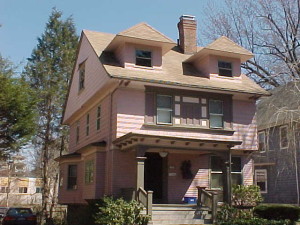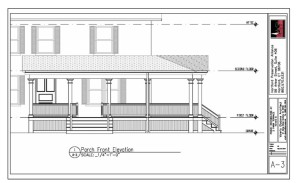 The Historic Homes Rehabilitation Tax Credit (HHRTC) is designed to encourage new home ownership of historic homes and to assist homeowners in maintaining and/or rehabilitating their historic houses.
The Historic Homes Rehabilitation Tax Credit (HHRTC) is designed to encourage new home ownership of historic homes and to assist homeowners in maintaining and/or rehabilitating their historic houses.
- The HHRTC provides a 30% tax credit for qualified expenses, up to $30,000 per dwelling unit, for the rehabilitation of one to four unit buildings.
- After completion of rehabilitation work, one unit must be owner-occupied for a period of five years.
- Although technically a tax credit, homeowners receive a state tax voucher at the end of the process which they in turn sell to a qualified entity (i.e. Eversource).
HPA is happy to provides low-cost assistance to homeowners located in Hartford area with their tax credit application. Contact Mary Falvey, mary@hartfordpreservation.org or 860.570.0331.
Eligible Properties:
One to four unit dwellings listed (either individually or in a historic district) on the State and/or National Register of Historic Places
See Hartford Properties Listed on State and National Registers of Historic Places
Eligible Owners:
- Individual homeowners and local non-profit Community Housing Development Corporations.
- Individual homeowners must occupy the property for five years after completion of the rehabilitation work.
Eligible expenses:
- Requires a minimum of $15,000 in qualified rehabilitation expenses
- 65% of total qualifying expenditures must include work directly attributable to the long-term preservation of the historic building fabric and character-defining features. (see Sample Calculations below)
ALL WORK being done on the property must comply with the Secretary of the Interior’s Standards for the Rehabilitation of Historic Properties not just work for which tax credits are being applied for.
Common items of qualified rehabilitation work include (but are not necessarily limited to):
Foundation
Walls
Porches
Windows
Roof
Chimney
Doors (interior & exterior)
Interior decorative features and details including ceiling ornamentation, moldings or medallions
Mechanical systems including HVAC, plumbing and electrical wiring
Generally not approved:
Replacement windows
Replacing “Yankee” or built-in gutters
Wholesale removal of siding
Blown-in foam insulation
Plastic/vinyl trim
Drywall laminated to plaster ceilings
“Permanent” Paint Products
Ineligible Expenses
Permits and fees
Architectural, Engineering and Design Costs
Landscaping/Site Work
Driveways and Sidewalks
Fencing
New Construction
Personal Labor
Sample Calculations:
Sample #1:
$15,000 – new roof
$5,000 – chimney repointing
$5,000 – electrical upgrades
$60,000 – kitchen renovation
$25,000 of proposed project costs (roof, chimney repairs & electric upgrade) are qualified expenses directly attributable to the long-term preservation of the historic building fabric and character-defining features
Total expenses eligible for tax credit = $38,461.54 ($25,000/65 X 100)
Eligible expenses $38,461.54 X 30% = $11,538.46 tax credit amount
Sample #2:
$15,000 – new roof
$5,000 – chimney repointing
$5,000 – electrical upgrades
$5,000 – repair wooden windows
$30,000 (all) of project costs are qualified expenses
Eligible expenses $30,000 X 30% = $9,000 tax credit amount
APPLICATION PROCESS
- Work to be completed MUST BE APPROVED by the State Historic Preservation Office BEFORE any project work is started
- Due to a high volume of applications, please factor in a minimum 30 day review period for an initial project approval from the State Historic Preservation Office
For further information and questions contact erin.fink@ct.gov or mary@hartfordpreservation.org
EFFECTIVE MARCH 17, 2020 all applications for the Historic Homes Tax Credit must be sent via e-mail to erin.fink@ct.gov.
GENERAL INSTRUCTIONS FOR COMPLETING TAX APPLICATION
Part 1 Application
Part 2 Application
Part 2 Amendment Please note: Amendments to work project must be submitted for review and approval before prior to beginning the work or you risk losing your tax credit reservation.
Part 3 Application
Part 4 Application
Historic Homes Rehabilitation Tax Credit Regulations
